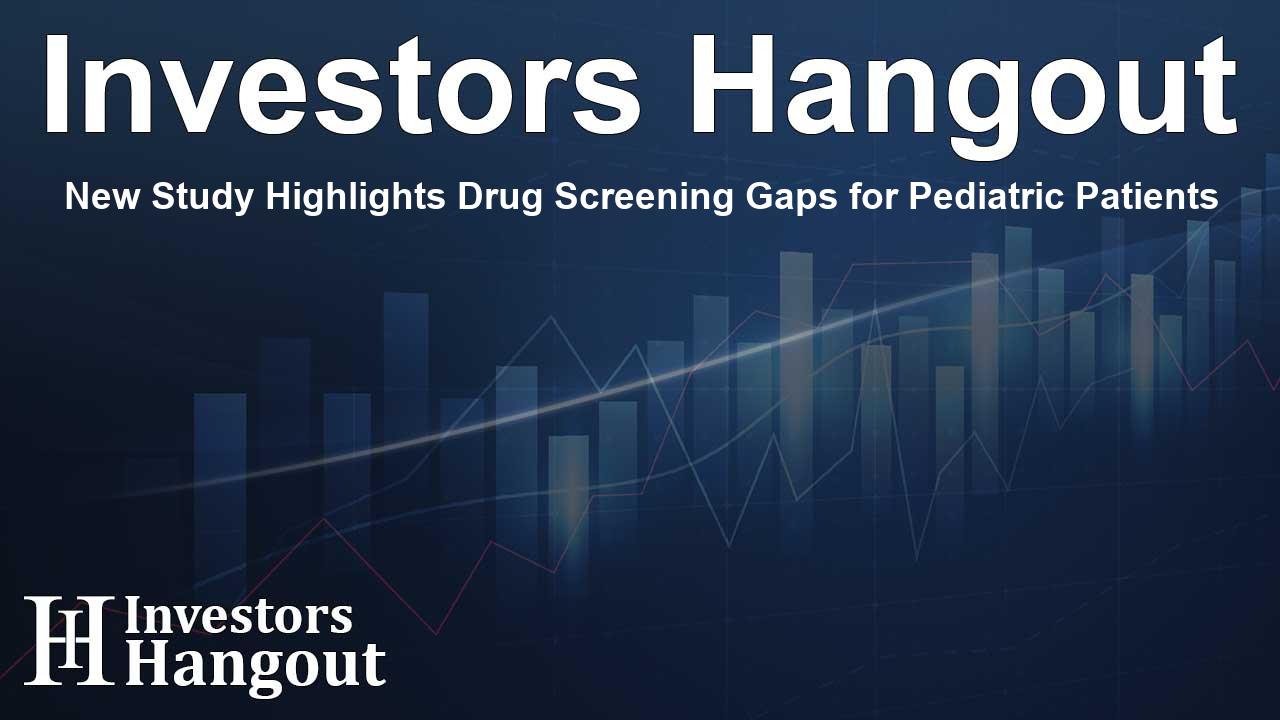New Study Highlights Drug Screening Gaps for Pediatric Patients

Understanding Drug Screening Challenges in Children
Recent research has brought attention to a significant issue in the field of clinical testing, particularly regarding the standard drug screening methods applied to pediatric patients. Findings suggest that conventional urine drug screenings do not always capture low concentrations of drugs, with one study indicating a failure rate of approximately 5% for children under 18. This revelation emphasizes the pressing need for changes in how these screenings are conducted to better protect vulnerable populations.
The Risks of Standard Urine Drug Screening
Standard urine drug screening, or urine drug screening (UDS), typically utilizes a technique called immunoassay. While this method is effective in many cases, it can lead to false positives—indicating drug presence when there may be none. However, another crucial concern has emerged regarding false negatives, where the tests fail to detect the actual presence of drugs in a child's system. This shortcoming is particularly prevalent in infants and young children due to their developing kidneys and the potential for incidental exposure to low drug levels.
Mass Spectrometry: A Promising Alternative
One proposed solution for mitigating missed drug detections is the implementation of mass spectrometry for all pediatric patients, bypassing the initial immunoassay stage altogether. Dr. Yanchun Lin, a clinical chemistry fellow, highlighted that this 'direct-to-mass-spectrometry' method offers a more accurate assessment of drug levels in pediatric urine samples. Since St. Louis Children's is recognized as the only U.S. hospital currently adopting this method, there is hope for broader implementation in clinical laboratories across the country.
Research Findings on Drug Detection
The compelling study conducted by Dr. Lin and colleagues compared the effectiveness of immunoassay versus mass spectrometry in identifying substances in pediatric urine samples, evaluating common substances such as amphetamine, cocaine, and opiates. The analysis revealed significant discrepancies between the two testing methods. Out of 125 urine samples testing positive via mass spectrometry, an astounding 90% contained substances unnoticed by immunoassay, with methamphetamine being a frequent culprit.
Importance of Accurate Testing
Additionally, the study found that among 115 samples that initially returned negative results with standard UDS, over a third tested positive for at least one drug using mass spectrometry. This alarming statistic underscores the necessity of evolving drug screening practices, especially as pediatric patients may face unknown hazards when sent into unsafe environments without proper support.
Challenges in Implementing Advanced Testing
Despite the clear advantages of direct-to-mass spectrometry, transitioning to this approach poses its own set of challenges for laboratories. Dr. Lin pointed out that the process is notably labor-intensive and requires expert personnel dedicated to maintaining the assay. However, the potential to improve patient care and outcomes warrants strong consideration for laboratories to adopt more advanced testing methods.
ADLM 2025: A Focus on Innovation in Healthcare
The ADLM 2025 conference serves as a platform for discussing critical issues in laboratory medicine, including the complexities of drug screening and innovative approaches to enhance healthcare solutions. With various sessions scheduled throughout the event, participants will have an opportunity to engage with groundbreaking research and advancements in clinical practices.
Final Thoughts on Ensuring Child Safety
The findings from this research not only shed light on the limitations of current drug screening methodologies but also propose actionable strategies to address these gaps. As many healthcare professionals are called to make informed decisions about care, the need for reliable testing measures becomes increasingly crucial. Embracing new technologies like direct-to-mass spectrometry in pediatric drug screening is a step toward safeguarding children's health and ensuring they receive the support they need.
Frequently Asked Questions
What are the main findings of the new study?
The study found that standard drug screening misses low concentrations of drugs in about 5% of pediatric urine samples, suggesting a need for better testing methods.
How does mass spectrometry improve drug detection?
Mass spectrometry provides a more accurate analysis of urine samples, allowing for the detection of drugs that traditional immunoassays may miss.
What role does St. Louis Children's Hospital play in this research?
St. Louis Children's Hospital is noted as the only facility in the U.S. currently utilizing a direct-to-mass-spectrometry approach for pediatric drug testing.
Why is it essential to address false negatives in drug screenings?
Addressing false negatives is critical to ensuring that children exposed to substances are accurately identified, allowing for timely intervention and support.
What is the significance of the ADLM 2025 conference?
ADLM 2025 focuses on advancements in laboratory medicine, highlighting innovative solutions and research related to patient safety and testing methodologies.
About The Author
Contact Dominic Sanders privately here. Or send an email with ATTN: Dominic Sanders as the subject to contact@investorshangout.com.
About Investors Hangout
Investors Hangout is a leading online stock forum for financial discussion and learning, offering a wide range of free tools and resources. It draws in traders of all levels, who exchange market knowledge, investigate trading tactics, and keep an eye on industry developments in real time. Featuring financial articles, stock message boards, quotes, charts, company profiles, and live news updates. Through cooperative learning and a wealth of informational resources, it helps users from novices creating their first portfolios to experts honing their techniques. Join Investors Hangout today: https://investorshangout.com/
The content of this article is based on factual, publicly available information and does not represent legal, financial, or investment advice. Investors Hangout does not offer financial advice, and the author is not a licensed financial advisor. Consult a qualified advisor before making any financial or investment decisions based on this article. This article should not be considered advice to purchase, sell, or hold any securities or other investments. If any of the material provided here is inaccurate, please contact us for corrections.
